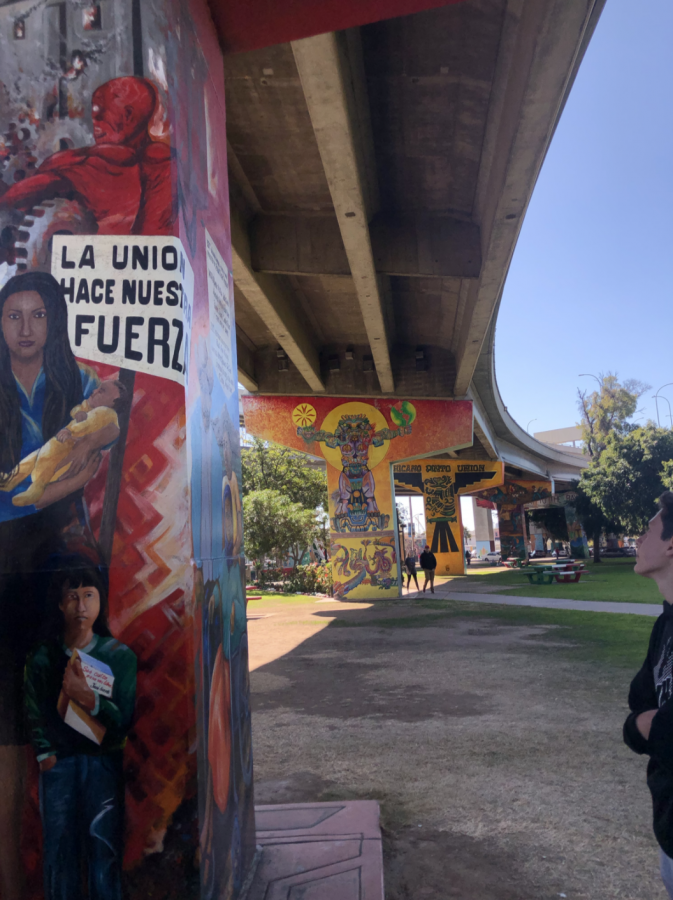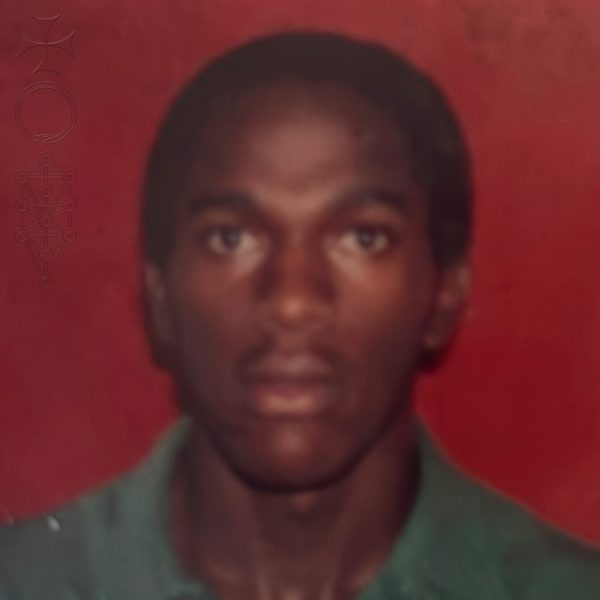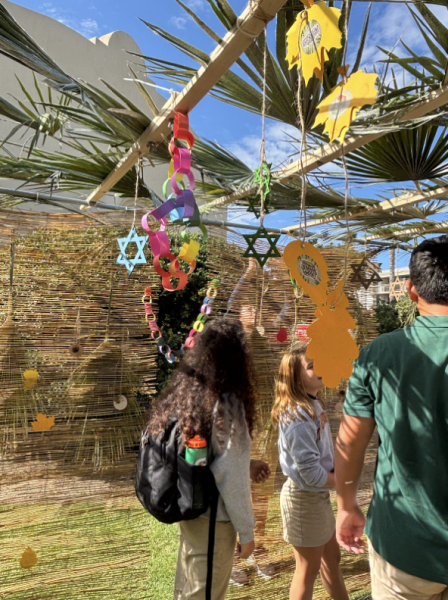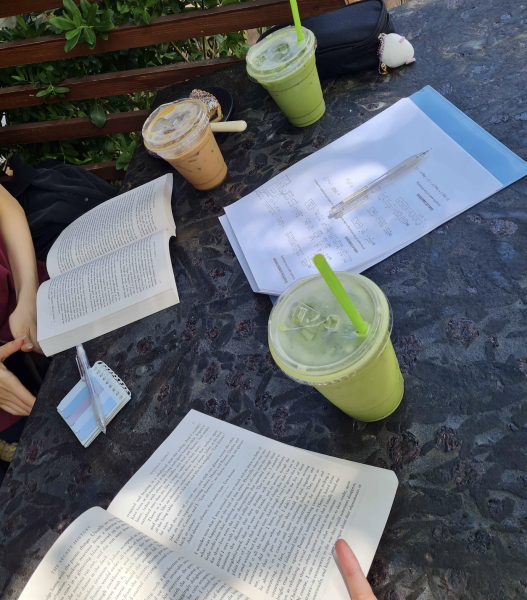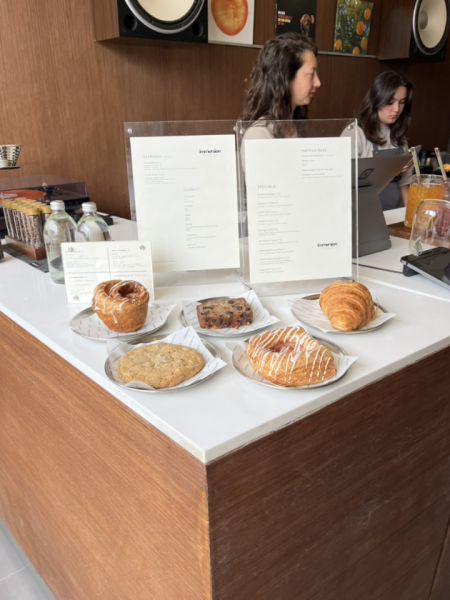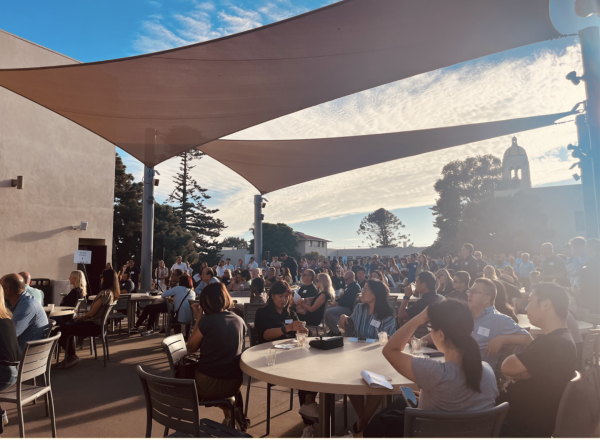Exploring Chicano Park
Members of the Bishop’s community learned more about different cultures in San Diego
Murals are painted on the concrete support systems of the freeway that runs above Chicano National Park, adding color and character to the scene.
On a typical Saturday morning, I wake up late, walk and feed my dog and maybe get a little homework done to start off a productive weekend. However, on the morning of February 15, I took part in one of the Bishop’s Border Reality Tours. The tour I participated in was a trip to Barrio Logan and Chicano National Park to learn more about the Chicano culture here in San Diego.
First, the tour attendees all met at The Via International Headquarters, a few minutes walk from Chicano Park. The headquarters was an open space with a high ceiling and big windows looking out at the street. A cool breeze ran through the room, giving the space a relaxed vibe. It was a space that welcomed visitors and friends as equals, and I felt comfortable as I sat down in a chair around the oval table in the center of the room.
The participants of the trip started to trickle in, a mix of students, teachers, and parents. Friendly chatter bubbled up whenever someone walked in, but the room returned to nervous silence once everyone settled back down in their chairs. Via International President Elisa Sabantini’s dog, with a tan fur and colorful bandana, slept on a chair next to me. No one really knew what to expect; we were all waiting for the start of the tour with anticipation. After everyone had arrived—some sitting on the couches, most sitting around the oval table—Sabatini began to talk. She gave us a history of Via International, and prepared us for the adventure we were about to go on through Chicano Park and Barrio Logan.
Via International was established 45 years ago and is based in both San Diego and Tijuana. Since its foundation, it has expanded its work of community-based development to Mexico City, Guatemala, and Costa Rica. Via International has a big focus on helping support Chicano Park, where students toured and learned the history of how the park came to be. The Chicano people and their history, goes widely unnoticed within San Diego. Though the Chicano people have a different culture and life experience from most San Diegans, they are still Americans nonetheless. After all, as Sabatini put it, “They didn’t cross the border—the border crossed us.”
After we left the headquarters and walked to Chicano Park, crossing Interstate 5 on a concrete bridge littered with trash, we met with Via International Community Development Director Rigo Reyes. We stood under a gazebo at the park that, when we looked up at the ceiling, pictured the Aztecs reaching Tenochtitlan. Under this beautiful mural, Reyes taught us about the hardship the Chicano people have faced in San Diego.
Barrio Logan, also known as Logan Park, is located in southeast San Diego. It contains a large population of Mexican-Americans, and has a history of struggle and frustration. In the 1950s, Interstate 5 was built, separating the community. This caused many families to move and many businesses to close. All of the changes that occurred during this time had not been discussed with the residents of Logan Park, and they started to feel frustrated with their new situation. This turned to determination, as residents started to demand a neighborhood park.
In response to the changes, residents began to demand a neighborhood park; a couple years later, their demands were met. This did not mean the struggle was over; in 1970, bulldozers came to convert the land into a California Highway Patrol station, not the park that had been promised. This led to the occupation of Chicano Park, when residents formed a human chain around the property in order to protect and keep their land. Sebastian Garma-Nieto (‘23), an attendee of the Border Reality Tour, was “very surprised to know that people who were living in San Diego weren’t able to choose what they wanted in their living environment.” It was a stand for recognition of their wishes for a park, and also a protest to the way the Chicano population had been treated. The demonstration lasted 12 days until the residents were finally able to call Chicano Park their own.
As we walked around the park, the murals were striking. They were intricate, full of color and meaning; it was clear that the community puts a lot of love into the park. There are close to a hundred murals in the park, with still more are being painted now. As we walked, our guide explained to us the history of several murals.
One, painted by Michael Schnorr and Susan Yamagata, portrays Coatlicue, the Aztec Goddess of the earth; she represents life and death and is very important to the Aztec culture and Chicano culture. Her mural itself also has an interesting story. Two months after it was completed, a group of cultural terrorists vandalized it with paint bombs. Instead of restarting or abandoning the mural, the artist—along with a team of workers from the Balboa Art Conservation Center—incorporated the splatters into the mural. Now, it is a living piece of history and a representation of the perseverance of the Chicano people. .
After walking through Chicano Park, we made a short trek to the restaurant Los Cuatros Milpas. It has been serving authentic Mexican food for three generations, and although the wait was long—about an hour—the food was worth it. We were told to order in Spanish, and the commotion between the workers there was lost in translation as I just struggled to choose between the pork tacos or tamales. The environment was hectic, with the small kitchen occupied by three or four women frying tacos, rolling burritos, and taking orders—then yelling them back to another woman whose hands flew to make the order in a matter of seconds. In the back of the restaurant, more women performed different tasks to make the delicious tortillas. Flour covered the ground, from the entrance to the back. On each side of the kitchen, there were rooms to eat in. I found a sense of community in the plastic tables and chairs, on both sides strangers who I had had a newfound experience of the delicious food to share with. Los Cuatros Milpas was a highlight of the trip with a mix of locals and tourists, bonded together by a love of food.
After we were filled with tacos, beans and rice, and tamales, we drove a few minutes to Grand Hill Park. There was a beautiful view looking over the Coronado Bridge, hazy in the distance, and the whole Barrio. It is a crowded community, so full of different cultures and languages. I had never been before, and did not realize what I was missing. Ben Kryrillos (‘21) said, “It was a unique opportunity that showed me a side of San Diego I’d never experienced before.” It is in San Diego, just miles from the Bishop’s campus, yet I had never ventured to Chicano Park, or the Barrio, to discover its beauty. Spanish teacher Dr. Carlos Martell talked to us about the Barrio, the community which he cares deeply for. He said, “The Chicano people have persevered in adversity, and they are an example of how in this adversity there is beauty and intelligence.”
Zach Fales (‘21) explained the impact of the tour: “I am extremely thankful that I was able to learn more about the history of Chicano Park and the hardships many endured in securing the park. It was a great experience.”
One thing is for sure: the border reality tour definitely changed my understanding and perception of San Diego, and many other students and members of the tour as well.
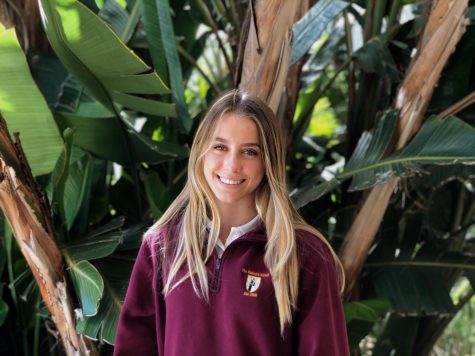
Abby Beamer is a sophomore staff writer for The Tower. She likes singing and her friends often tell her to shut up, probably because she shouldn’t sing....


